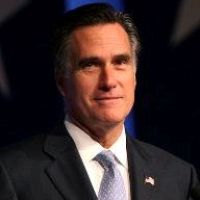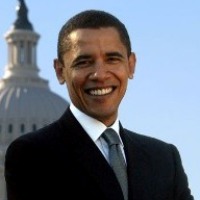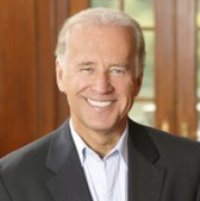The Top 5 Investments Held by Romney and Obama
I’ve been glued to the news this entire election season, but one heated exchange at the second presidential debate between President Barack Obama and Gov. Mitt Romney piqued my curiosity. Here it is from the Washington Post’s full transcript, edited to show concisely a portion of their conversation about investing:
Obama: Romney is investing “in companies that are building surveillance equipment for China to spy on its own folks.”
Romney: “Mr. President, have you looked at your pension? Have you looked at your pension?”
Obama: “You know, I — I don’t look at my pension. It’s not as big as yours so it doesn’t take as long. … I don’t check it that often.”
Romney: “Let me give you some advice. Look at your pension. You also have investments in Chinese companies. You also have investments outside the United States. You also have investments through a Caymans trust.”
This tiff certainly received a lot of attention and got a lot of people interested in finding out whether some of those statements about the candidates’ investments were true. It turns out that Romney and Obama were partially correct, but I’ll tell you more about that in a moment.
The duel over the candidates’ investments got me thinking. What other kinds of investments do the candidates have? And what do their portfolios look like?
For answers, I examined both candidates’ (and their running mates’) recent public financial disclosure documents that we found at OpenSecrets.org, which is run by the Center for Responsive Politics. The latest available disclosures were filed in 2011 and detailed their finances for the year 2010.
Take note that it’s not possible to come up with a precise measure of each person’s wealth or asset holdings from these documents. That’s because exact dollar-amount disclosures aren’t required. For example, a $300,000 investment property would be reported only as fitting in a range of $250,000 to $500,000.
Below are the five favorite investments — and other portfolio holdings — for Romney and his running mate, Wisconsin Rep. Paul Ryan, as well as for Obama and Vice President Joe Biden. They are presented in order of highest to lowest estimated portfolio value.
 Former Massachusetts Gov. Mitt Romney
Former Massachusetts Gov. Mitt Romney
Total assets: 192 items, $83.8 million to $255.9 million
Top five investments:
1. Federal Home Loan Bank Securities $26.7 million to $97.5 million
2. Goldman Sachs Bank Deposit $7 million to $31 million
3. BCIP Trust Assoc III $5 million to $25 million
4. GS Inflation Protected Securities Fund $2.25 million to $6.5 million
5. Tie between iShares S&P Europe 350 Index (NYSE: IEV) and SPDR S&P 500 (NYSE: SPY): both $2 million to $6 million
Total value of top five investments: $45 million to $172 million
Romney is certainly no stranger to money or investing. With 192 different investments and a net worth of $230 million, according to Forbes, Romney would have been the third wealthiest president in history (when you adjust for inflation) if he were elected.
Romney plays it mildly safe by holding the bulk of his investment dollars (Forbes estimates about 40%, or $91 million) in low- to moderate-risk bonds and other debt securities. His largest bond holdings are in Federal Home Loan Bank Securities. These bonds, which offer moderately safe yields, are sold by the FHLBanks, which use the cash to provide lower-cost mortgage loans to potential home buyers.
Romney holds another $52 million (about 23% of his portfolio) in several Bain Capital funds; most of them he acquired as a retirement package when he left Bain Capital in 1999, the private-equity firm he cofounded in 1984. The largest of these funds, his BCIP Trust Associates III fund, holds between $5 million and $25 million. Despite this fund being “domiciled in the Caymans,” PolitiFact researched this topic and found that the fund’s investment decisions are solely managed in a blind trust by the Romney family trustee, Brad Malt, rather than Romney himself.
Forbes also estimates the governor holds $23 million in mutual funds and exchange-traded funds (ETFs), including the S&P Europe 350 Index (which invests in European large-cap stocks), an S&P 500 ETF and a few Goldman Sachs (NYSE: GS) mutual funds. Romney has 8% ($18 million) invested in his houses and real estate and just 7% of his investment dollars (or $16 million) in cash.
 President Barack Obama
President Barack Obama
Total assets: 9 items, $2.56 million to $8.26 million
Top five investments:
1. U.S. Treasury Notes: $1 million to $5 million
2. U.S. Treasury Bills: $600,000 to $1.25 million
3. JPMorgan Chase Private Client/Checking: $500,000 to $1 million
4. Vanguard 500 Index: $200,000 to $450,000
5. Tie between Calvert Equity Portfolio 529 Portfolio and Pimco Total Return 529 Portfolio: both $100,000 to $200,000
Total value of top five investments: $2.5 million to $8.1 million
Looking at Obama’s portfolio holdings (of which he has just nine), he is unmistakably playing it safe. According to his 2011 financial disclosures, the president has more than 80% (between $2.12 million and $7.32 million) of his invested assets in cash or low-risk Treasury bonds.
Obama does have some skin in the market though. Between $450,000 and $950,000 (more than 11% of his portfolio) is invested in stock-dominated mutual funds. And of these, the president holds two 529 funds for his daughters, which are mostly invested in large-cap stock mutual funds, and a Vanguard 500 Index fund, which tracks the S&P 500.
And what about Obama’s pension that Romney brought up during the second debate? The president was correct in saying the pension (worth $50,000 to $100,000) he received after serving as a senator in Illinois was much smaller than Romney’s multimillion-dollar retirement package from Bain Capital.
But Romney was right, too. PolitiFact deemed Romney’s statement that Obama held investments in Chinese companies and through a Cayman Island’s trust, “mostly true,” noting that while the investing decisions made within the pension are beyond President Obama’s control (similar to Romney’s blind trust situation), one of the large investments within the Illinois pension system was “organized in the Cayman Islands.”
Don’t get too excited though — PolitiFact also mentioned that in both cases, “there is no evidence of anything illegal or improper” with either candidate’s investment holdings. Nonetheless, it was a very interesting exchange.
.jpg) Wisconsin Rep. Paul Ryan
Wisconsin Rep. Paul Ryan
Total assets: 90 items, $2.04 million to $8.42 million
Top five investments
1. Prudence Little Living Trust: $1 million to $5 million
2. Ava O Ltd: $100,000 to $250,000
3. Blondie & Brownie: $100,000 to $250,000
4. Edvest Wells Fargo Moderate Portfolio: $100,000 to $250,000
5. Tie between Edward Jones Money Market and The Home Depot Inc. (NYSE: HD): both $100,000 to $250,000
Total value of top five investments: $1.5 million to $6.25 million
The GOP’s vice presidential candidate and young-gun budget crafter Paul Ryan seems to crunch government figures by day and invest by night. Ryan carries an array of investments — 90 in all.
Ryan shares ownership in the Prudence Little Living Trust with his wife, Janna, after inheriting it from her mother in 2010. The bulk of his reported investment dollars, nearly $1 million to $5 million (more than 60% of his portfolio), is held within the trust.
His largest investment holdings are held within his Ryan-Hutter Investment Partnership, which invests between $250,000 and $500,000 (around 10% of his portfolio) in several diversified mutual funds and individual stocks — generally large-cap companies ranging from The Home Depot, ExxonMobil (NYSE: XOM) and Apple (Nasdaq: AAPL) to Bristol-Myers Squibb (NYSE: BMY) and General Electric (NYSE: GE). Ryan has another $200,000 to $500,000 (another 10% of his portfolio) invested in two commodity-centered companies: Ava O Ltd., which specializes in mining, and the gravel-rights firm, Blondie & Brownie.
The 42-year-old Wisconsin congressman has the rest of his investment mix in various mutual funds (including $50,000 to $100,000 in the growth and value stock-focused Fidelity Contrafund) and money market funds.
 Vice President Joe Biden
Vice President Joe Biden
Total assets: 26 items, $239,028 to $866,000
Top five investments:
1. Residential rental property (Wilmington, Del.): $100,000 to $250,000
2. WSFS/CD: $100,000 to $200,000
3. Mass Mutual Whole Life Insurance Policy: $6,000 to $90,000
4. Fidelity Freedom 2020 Fund: $15,000 to $50,000
5. WSFS/Savings: $2,000 to $30,000
Total value of top five investments: $223,000 to $620,000
When it comes to his investments, Joe Biden’s portfolio looks like it may follow his supporter-deemed “everyman” persona. His rental property in Wilmington, Del., is his largest single asset by far, worth somewhere in the neighborhood of $100,000 and $250,000 and making up around a third of his portfolio.
The 69-year-old Biden plays it very safe with another roughly 40% of his portfolio, holding between $106,000 and $295,000 in cash; all within a jumbo certificate of deposit (note the WSFS/CD listed above) and several smaller checking and savings accounts.
The remaining quarter of the vice president’s portfolio is diversified among small-cap, mid-cap, growth and high-yield equity mutual funds, a target date mutual fund (Fidelity Freedom 2020 Fund) and a whole life insurance policy.
Action to Take –> Just because certain investments are right for your candidate of choice, it doesn’t mean they’re right for you. Do your due diligence before you make any investments and, above all, make sure you can afford to make the investments you choose.
[Note: Here at StreetAuthority, we focus on safe, secure stocks that you can buy now and profit from in the long term. That’s why we call them “forever” stocks. Warren Buffett, Goldman Sachs, John Kerry… maybe even YOUR own congressman already own many of these stocks. They could just be the single greatest tool of wealth creation the market has ever known. We’ve put together a special report on these unique stocks, which you can read by clicking this link.]
